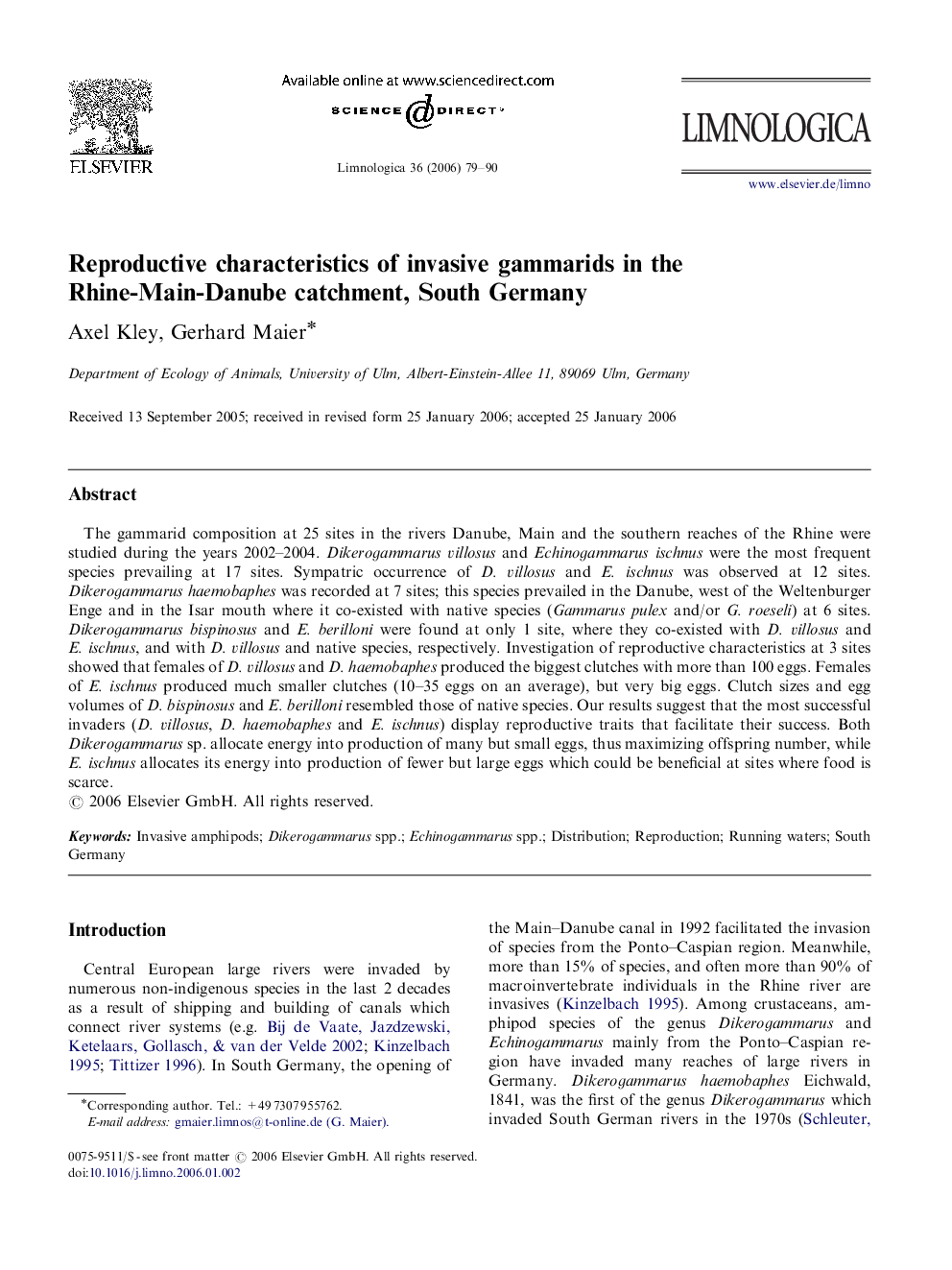| Article ID | Journal | Published Year | Pages | File Type |
|---|---|---|---|---|
| 4400748 | Limnologica - Ecology and Management of Inland Waters | 2006 | 12 Pages |
Abstract
The gammarid composition at 25 sites in the rivers Danube, Main and the southern reaches of the Rhine were studied during the years 2002-2004. Dikerogammarus villosus and Echinogammarus ischnus were the most frequent species prevailing at 17 sites. Sympatric occurrence of D. villosus and E. ischnus was observed at 12 sites. Dikerogammarus haemobaphes was recorded at 7 sites; this species prevailed in the Danube, west of the Weltenburger Enge and in the Isar mouth where it co-existed with native species (Gammarus pulex and/or G. roeseli) at 6 sites. Dikerogammarus bispinosus and E. berilloni were found at only 1 site, where they co-existed with D. villosus and E. ischnus, and with D. villosus and native species, respectively. Investigation of reproductive characteristics at 3 sites showed that females of D. villosus and D. haemobaphes produced the biggest clutches with more than 100 eggs. Females of E. ischnus produced much smaller clutches (10-35 eggs on an average), but very big eggs. Clutch sizes and egg volumes of D. bispinosus and E. berilloni resembled those of native species. Our results suggest that the most successful invaders (D. villosus, D. haemobaphes and E. ischnus) display reproductive traits that facilitate their success. Both Dikerogammarus sp. allocate energy into production of many but small eggs, thus maximizing offspring number, while E. ischnus allocates its energy into production of fewer but large eggs which could be beneficial at sites where food is scarce.
Related Topics
Life Sciences
Agricultural and Biological Sciences
Aquatic Science
Authors
Axel Kley, Gerhard Maier,
